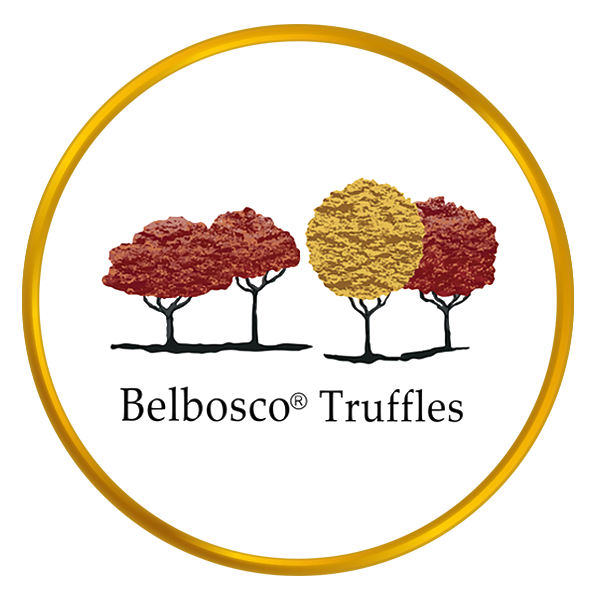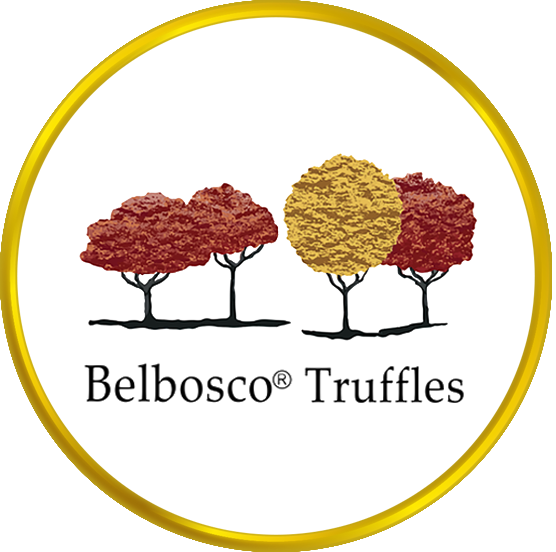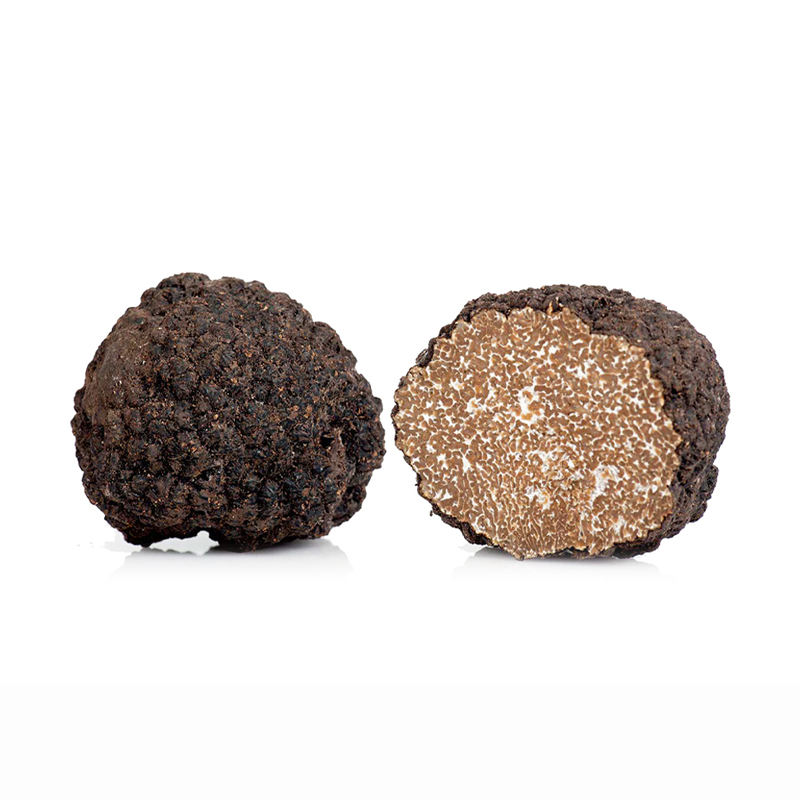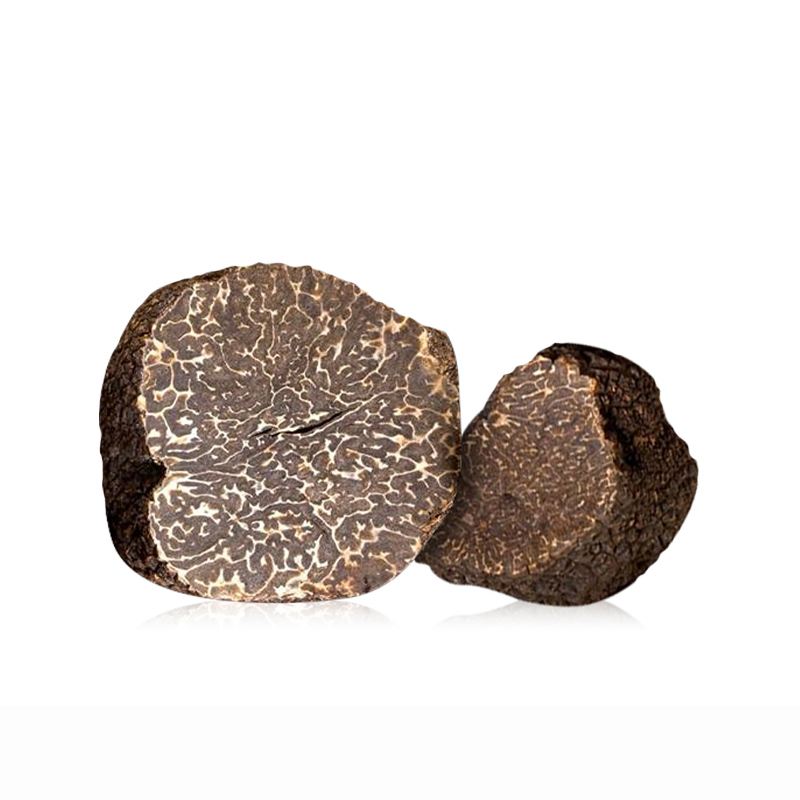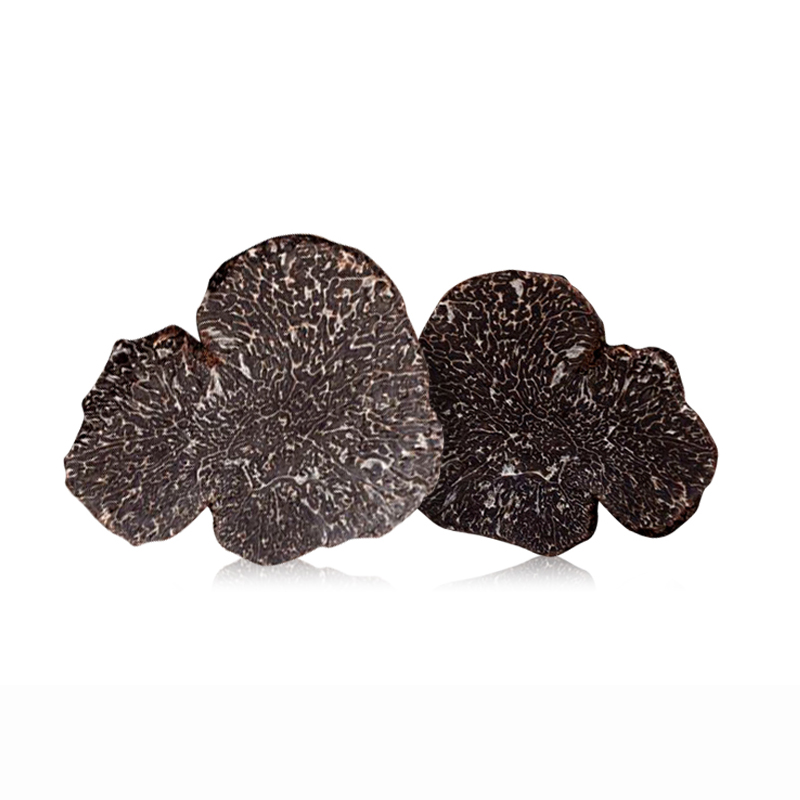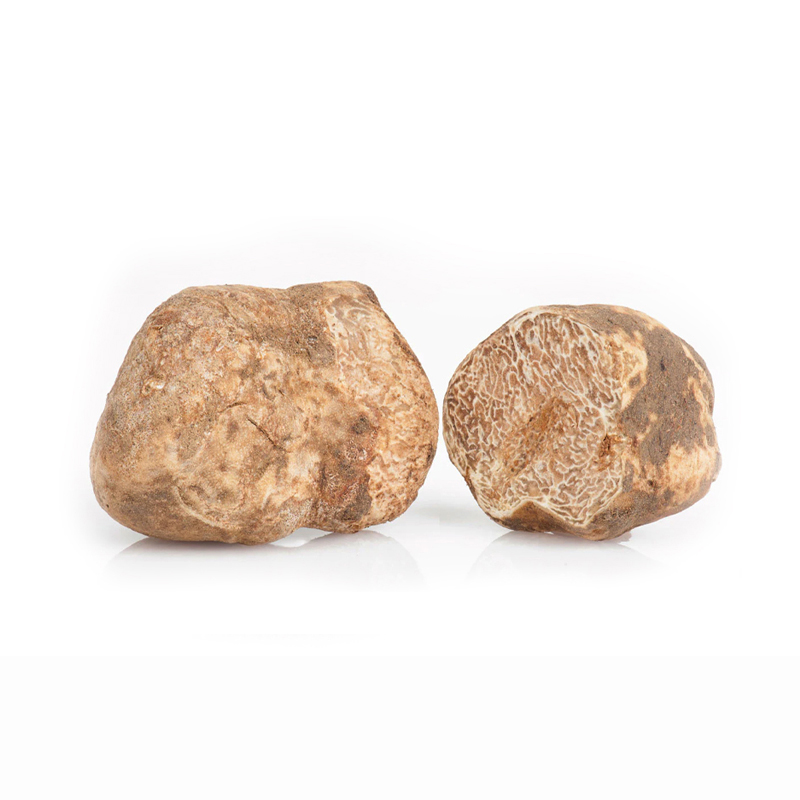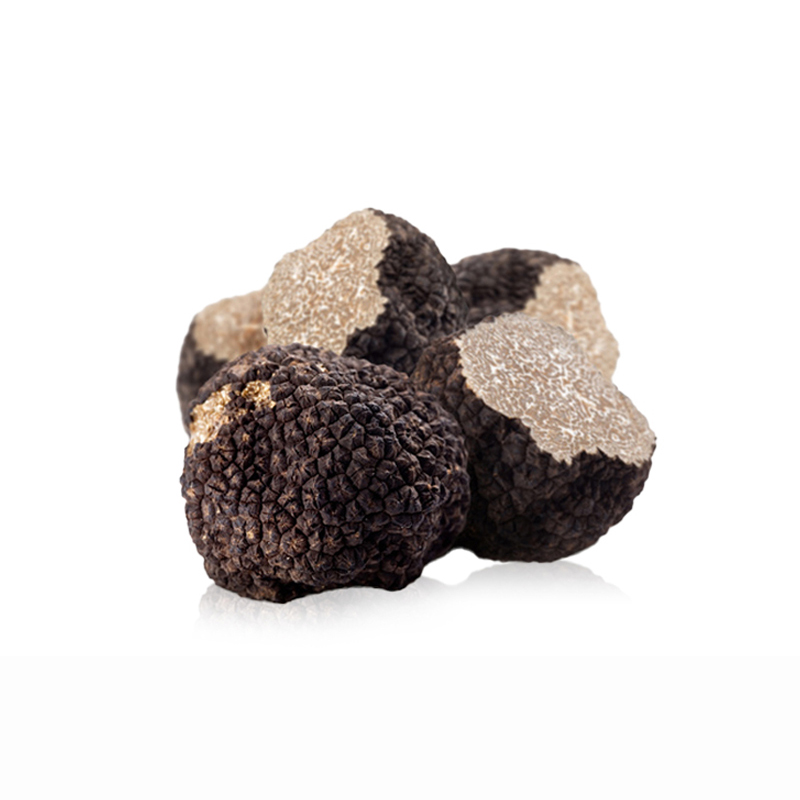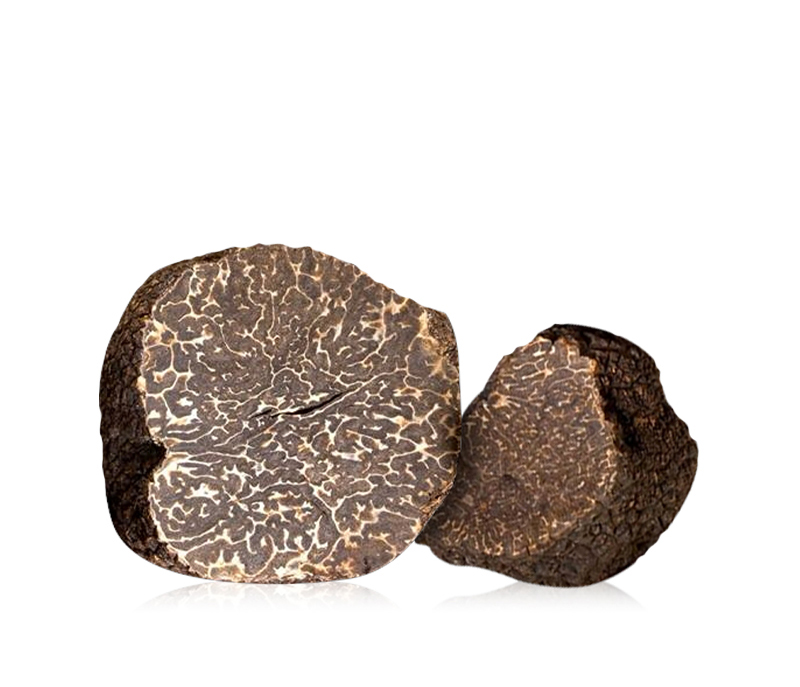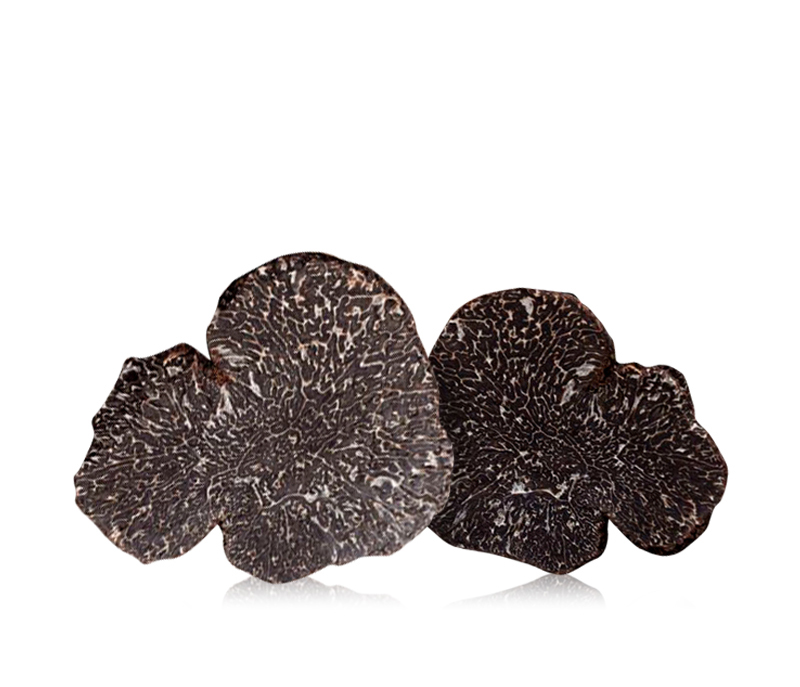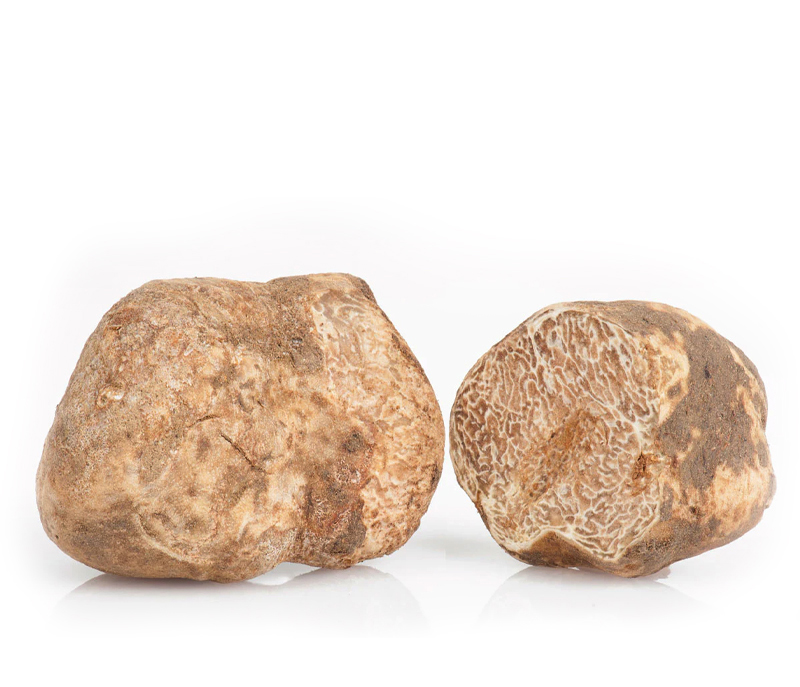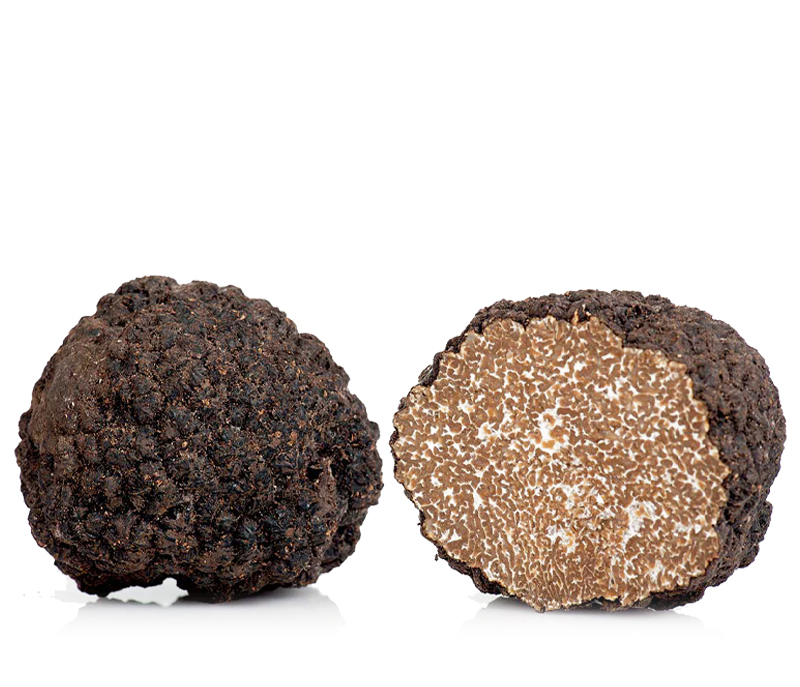
The European Black Summer Truffle
Tuber aestivum Vittadini
The European Black Summer Truffle or “Scorzone” Truffle is found in Southern France and in Central Italy. Its season begins in April and extends through until late August/early September. It has a more subtle aroma and flavor than its European Black Winter Truffle cousin. The Black Summer Truffle grows amongst oak, hazelnut, chestnut, elm and poplar trees. It has a knobby, roundish, shape and faceted, dark brown skin and the flesh of the truffle is yellowish–grey. The earthy aromas and toasted corn and garlic-like flavors of the Black Summer Truffle make it a perfect garnish for cream-based recipes. Also, because this truffle is a more resistant variety, it can be heated at low heat directly with food preparations without losing its aroma and flavor, unlike other truffle varieties. Try shaving or mincing these truffles and garnishing them on pasta or using them as an ingredient in mashed potatoes or as a topping for toasted bread with olive oil.
